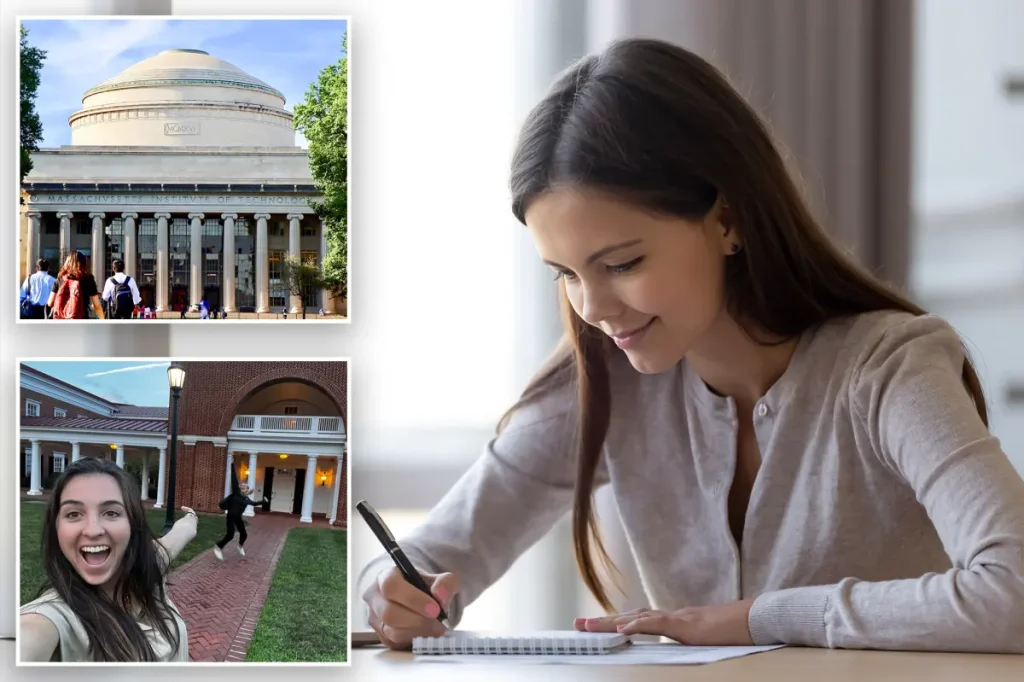The Art and Science of College Admissions Essays: What Matters Most
In the high-stakes arena of college admissions, what you choose to omit from your personal essay might be as crucial as what you include. Today’s admissions officers face an overwhelming volume of applications—tens of thousands per cycle—giving them just minutes to decide each applicant’s fate. This reality has created unprecedented stress among students, with 91% reporting anxiety about academics and college prospects. It’s no wonder: acceptance rates at prestigious institutions continue to plummet, while expectations remain sky-high, especially for legacy applicants. Sophie Smith, co-founder and CEO of College Contact, has guided thousands of students through this challenging landscape with remarkable success—her company boasts an 86% rate of placing students in their first-choice schools. Through her experience, Smith has identified the critical mistakes that can derail even the most promising applications.
In an age where technological shortcuts tempt stressed students, Smith offers a clear warning: artificial intelligence is not your friend in essay writing. A Cornell University study comparing 30,000 human-written essays against those produced by eight popular language models confirmed what admissions officers already know—AI-generated content lacks authentic voice. “Using AI to write your essay will ultimately ruin and diminish your hard work,” Smith emphasizes in her popular TikTok videos. “Admissions officers read thousands of essays—they know when the voice doesn’t sound like a teenager.” The strongest essays don’t merely present information; they tell stories that reveal transformation and growth. They show rather than tell, using narrative techniques to demonstrate how experiences have shaped the applicant’s character and perspective. This human quality simply cannot be replicated by even the most sophisticated algorithms.
Finding the right balance between vulnerability and oversharing represents another common challenge for today’s applicants. Having grown up in an online culture that often rewards emotional disclosure, many students mistakenly believe that shocking or provocative content will make their essays stand out. Smith disagrees: “If you wouldn’t feel comfortable saying it out loud to a trusted adult, reconsider your essay topic.” She notes that effective essays don’t need to shock or provoke—they need to reveal curiosity, growth, and character through thoughtful reflection. This might come through describing a lesson learned while coaching a younger sibling or a small moment that shifted your perspective in a meaningful way. The key is channeling emotion into stories that demonstrate maturity and judgment. “Vulnerability is powerful—but it needs to show maturity,” Smith advises. For today’s digitally native teenagers, this distinction between authentic self-expression and professional presentation can be difficult to navigate.
Specificity makes the difference between forgettable and unforgettable essays. Smith encourages students to incorporate the five Ws—who, what, where, when, and why—with vivid sensory details that bring their experiences to life. “If I read your essay and think 300 other students could’ve written it, it’s not specific enough,” she explains. “Details are what make an essay unforgettable. Tell me what sweatshirt you were wearing, what the room smelled like, what song was playing. Those small choices show me how you think and what matters to you.” The most effective essays use these details to build toward meaningful revelations, often saving their most powerful insights for the final lines. This approach transforms the essay from an academic exercise into a window into the applicant’s personality and thought processes. However, Smith cautions that judgment matters as much as storytelling skill—essays centered on illegal activities or serious misconduct rarely demonstrate the maturity colleges seek, regardless of how well they’re written.
In today’s increasingly test-optional admissions environment, personal essays carry more weight than ever before. “Since many colleges no longer require SAT or ACT scores, the essay has become one of the clearest ways for applicants to stand out,” Smith notes. While admissions officers evaluate applications holistically—considering grades, extracurricular activities, and recommendations—the personal statement provides unique insights that standardized metrics cannot capture. Different institutions prioritize different factors; some focus primarily on academic performance and course rigor, while others place greater emphasis on personal qualities and potential contributions to campus life. Regardless of a school’s specific priorities, the essay offers applicants a singular opportunity to differentiate themselves from others with similar academic credentials.
The most successful applications create a cohesive narrative across all components, with each section revealing different facets of the applicant’s character and experiences. “Your activities list shows what you’ve done—your essay shows who you are,” Smith explains. “If your essay touches on a club or project, focus on what it taught you, not just what you did.” This complementary approach helps admissions readers develop a more complete understanding of each applicant. Ultimately, colleges seek students who will positively impact their communities—as Smith puts it, “students who are going to be positive role models, doers, self-starters and change-makers on campus and as future alumni.” The personal essay provides crucial evidence of these qualities, demonstrating the applicant’s capacity for reflection, growth, and meaningful contribution. By approaching the application as an integrated whole rather than disconnected parts, students can present a compelling case for admission that highlights both their achievements and their potential.


